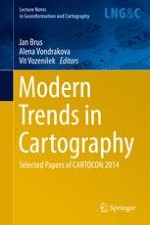2015 | OriginalPaper | Buchkapitel
The Next Generation of Atlas User Interfaces: A User Study with “Digital Natives”
verfasst von : Raimund Schnürer, René Sieber, Arzu Çöltekin
Erschienen in: Modern Trends in Cartography
Aktivieren Sie unsere intelligente Suche, um passende Fachinhalte oder Patente zu finden.
Wählen Sie Textabschnitte aus um mit Künstlicher Intelligenz passenden Patente zu finden. powered by
Markieren Sie Textabschnitte, um KI-gestützt weitere passende Inhalte zu finden. powered by
